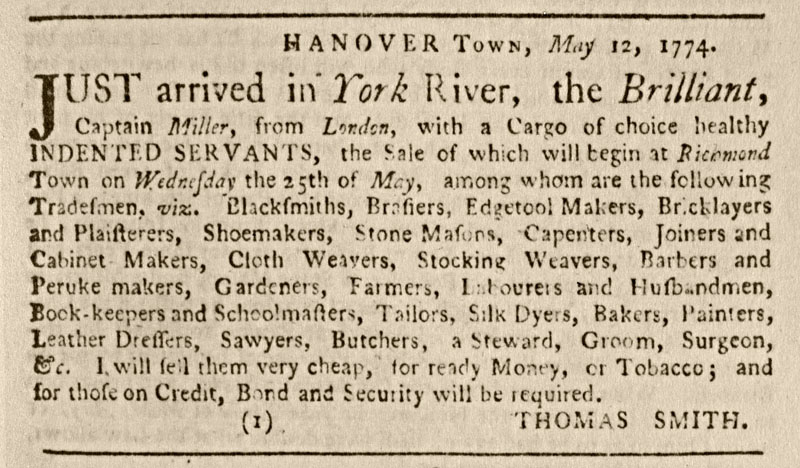It is plentifully documented elsewhere that white indentured were treated harshly and less well than black slaves. Gaining freedom after their indenture served, the whites had no monetary value, unlike slaves, and thus were expendable, illnesses and death not withstanding. They were a time-decaying depleting asset much like stock options today.
See: A Letter from an Indentured Servant in Virginia, 1623

"Ready Money"....a persistent problem in early-modern Britain: a very scarce supply of what people then called "ready money", by which they meant gold and silver coin. People and governments alike refused to accept paper money as a valid means of payment; ultimately they insisted upon being paid in precious metals Source
We have seen that the Southern plantation system which made the South such a prosperous land and shaped its culture and social order developed in the Caribbean region and before that in the eastern Atlantic. We have also seen how in both of these areas the initial mixed labour model of employing indentured European servants, White slaves, free White workers, American Indian slaves and African slaves eventually gave way to complete reliance on African slave labour.
Most recently, we have touched on White demographic failure in the Caribbean region (due to a very high mortality rate) and the impact this had socially and politically on the region. Greatly outnumbered Whites in the Caribbean developed a ‘garrison mentality’ and depended upon British troops to help them maintain control over a large Black slave majority. Continuing with these subjects of demographic and labour development, herein we are going to look more closely at the Upper South.
David Brion Davis, on page 132 of his book Inhuman Bondage: The Rise and Fall of Slavery in the New World, describes how the Chesapeake Bay region differed from the demographic and social development of the Caribbean sugar islands. Tobacco farming was significantly less labour intensive (as well as less profitable) than sugarcane farming (with cotton farming generally falling somewhere in between the two). Nevertheless, the mortality rate for the mostly White labourers who worked the tobacco fields was extremely high in the early decades. Notice too that these White workers were a mix of indentured servants and capitive workers, who were essentially slaves.
Despite the arrival of a handful of black slaves, English indentured servants more than met the demand for labor stimulated by Virginia’s great tobacco boom of [the] 1620s. …[G]iven their appalling mortality from disease in the early decades, such servants had only a fifty-fifty chance of surviving a five-year term and collecting their “freedom dues,” a small cash payment or a piece of land. Until the last third of the seventeenth century, there were enough English teenagers, farm laborers, and artisans who were deluded by the colonizers’ propaganda to meet the Chesapeake colonies’ expanding demand for labor. The flow of such voluntary immigrants were supplemented by deportation of petty criminals, including debtors, as well as Irish prisoners and rebellious Scots.
Source: White servants in colonial Virginia
